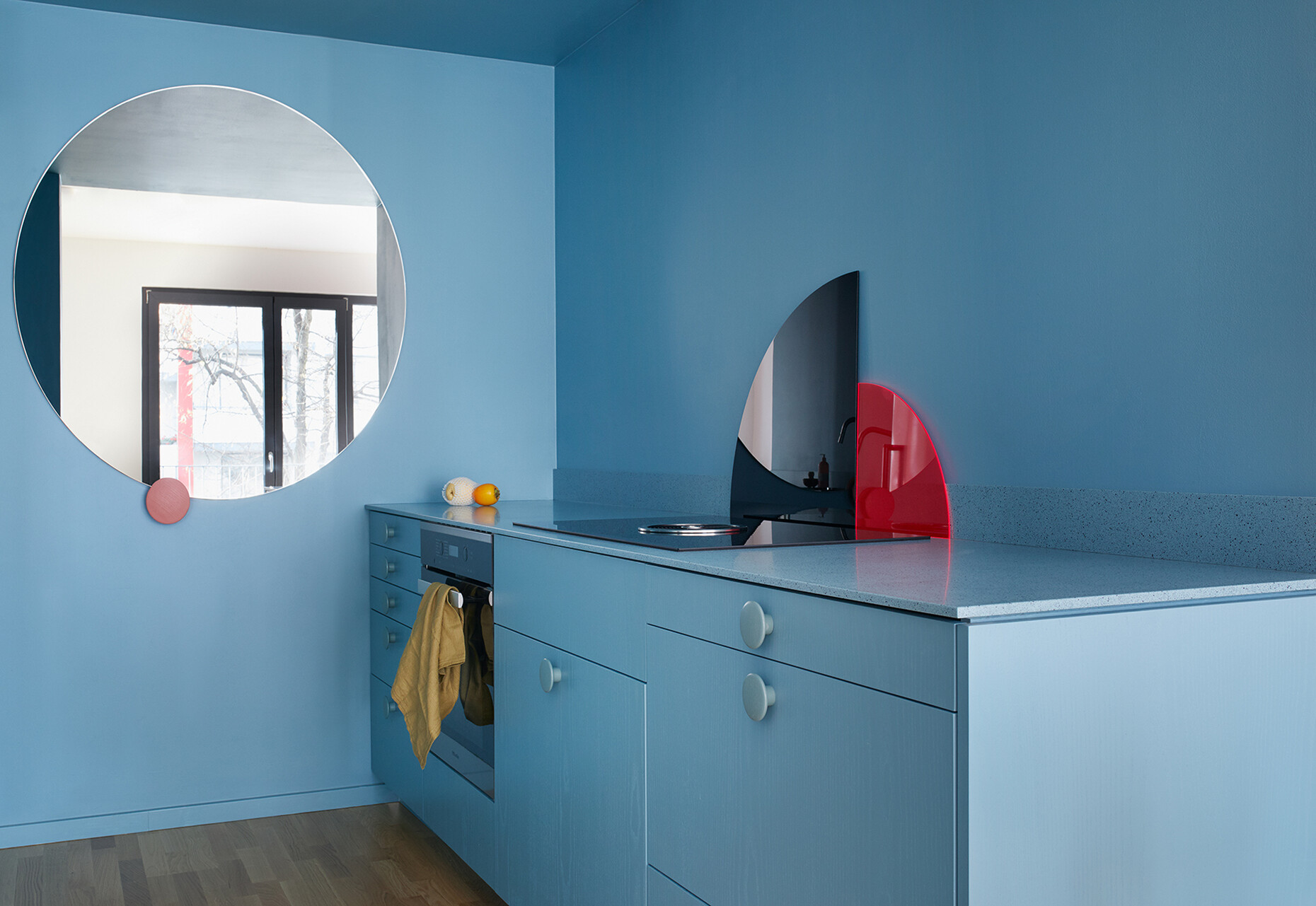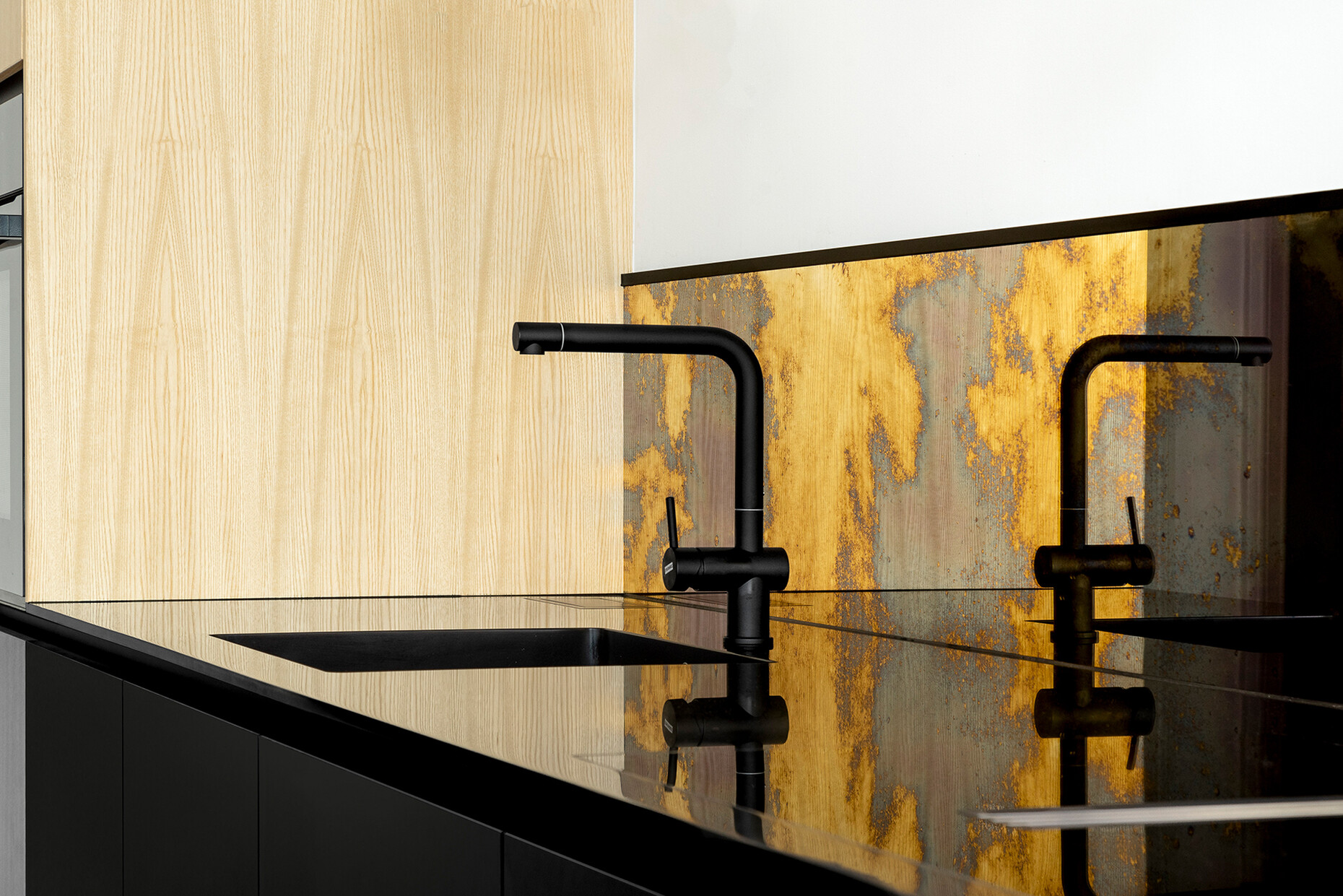The courage to be colorful
It all began ten years ago with a children’s bed that expands as the child gets bigger – and a design for a kitchen. Back then, Sina Gwosdzik and Jakob Dannenfeldt were fresh out of university with degrees in Product Design in their pockets, and were welcoming their first son into the world. Since then, their studio Jäll & Tofta, named after Jakob's mother's Swedish home Jälluntofta, has offered solutions for private homes and offices - from wardrobes and kitchens to complete furnishings.
Judith Jenner: What do people expect when they come to you asking you to design a new kitchen?
Sina Gwosdzik: Some customers come with specific ideas because they want a bespoke kitchen made by a craftsman and appreciate good quality. Others have already looked at solutions that supplement existing systems, but feel overwhelmed when it comes to planning and find that cheaper options complete with inner workings and fittings will always require some kind of compromise. A lot of customers actually don’t want to compromise at all when they buy their own home, so they come to us wanting an all-round worry-free package. They’re looking for someone who asks what they want, who incorporates their own ideas, who can provide the tradespeople and ultimately takes care of the installation.
You are product designers by trade. Do you approach projects differently to interior architects?
Jakob Dannenfeldt: When it comes to planning, we always attach great importance to the details and ensure that a kitchen is not just a kitchen, but also something that will be enjoyed for a long time. When we plan kitchens, we go to great efforts to use every centimeter of storage space. It’s like a game of Tetris. Space for housing in cities is simply in short supply.
Sina Gwosdzik: What we took away from our product design course is a keen interest in materials. We always look carefully at what’s on the market, what can be used differently or combined. We also seek to move a bit away from the standard stainless-steel, stone or wood worktops and the usual options for cupboard doors. For the construction and the design, we try not to view the kitchen as purely a functional space, but rather as the heart of the home.
Jakob Dannenfeldt: Overall we have the feeling that people are placing greater emphasis on the things that surround them at home. That’s no doubt partly due to the pandemic. If you’re at home a lot, you’re simply more likely to notice where there’s a need for optimization.
Are you getting more enquiries than usual?
Sina Gwosdzik: Our orders have tripled since the beginning of this year. Only a month ago we welcomed a new colleague on board, so with our additional freelancer there are now four of us. I notice that people are discovering they have more options at their fingertips and now perceive interior design as a service in itself. These days, hiring a professional to furnish your house is not automatically an admission of lacking taste. That’s rubbish anyway, because interior design always means making joint decisions.
What materials do you use in kitchens?
Jakob Dannenfeldt: The difficult thing about kitchens is always finding a good worktop material. The selection is relatively limited because they have to stand up to a great deal of wear and tear. For some projects we work with recycled plastic boards, and there are lots of new developments coming out of the UK and the Netherlands. The question with new materials is always how they will stand the test of time, but if the customer is on board with it then we can find some very interesting options.
Sina Gwosdzik: We also love combining materials and thus creating a contrast, for example if we put plastic next to stone or next to linoleum.
How do you make use of color in kitchens?
Sina Gwosdzik: It goes without saying that colors are always subject to certain fashions and reflect the spirit of the times. No one can escape that kind of influence. We try to focus on whom we are creating the kitchen for and encourage people to trust their instincts. If you feel good about a plan then it’s often something that will work for years to come. Some people become unsure when there are lots of decisions to be made and fall back on the safe grey and white options. In my experience, that’s something people tend to regret later more than a bold color choice. It remains a boring compromise.
How does the planning process usually work?
Jakob Dannenfeldt: Generally, it starts with a telephone call. After that, the living situation is analyzed, measurements taken and initial thoughts discussed. And then we get down to construction.
Sina Gwosdzik: The matter of costs, which is a rather unpleasant one for us as designers, is one I try to broach early on so that we know whether or not a project will be within the customer’s budget. Often the expensive bit is not the design service, but rather the tradespeople. Once all that has been clarified, I go to visit the customer. I think it’s very important to get to know each other personally and to see if you’re on the same wavelength. Some of our customers are very knowledgeable about design, but there are also a lot who are not and who really want to try something different. With targeted questions and examples, we then try to sketch out the project bit by bit.
Where do you get your inspiration?
Sina Gwosdzik: Right now, inspiration comes almost entirely through digital means, but we’re also very interested in art. It’s not about trends here, but rather an atmosphere that flows unmistakably into our designs. But ideas also come to me when I’m working in the garden and enjoying nature.
























